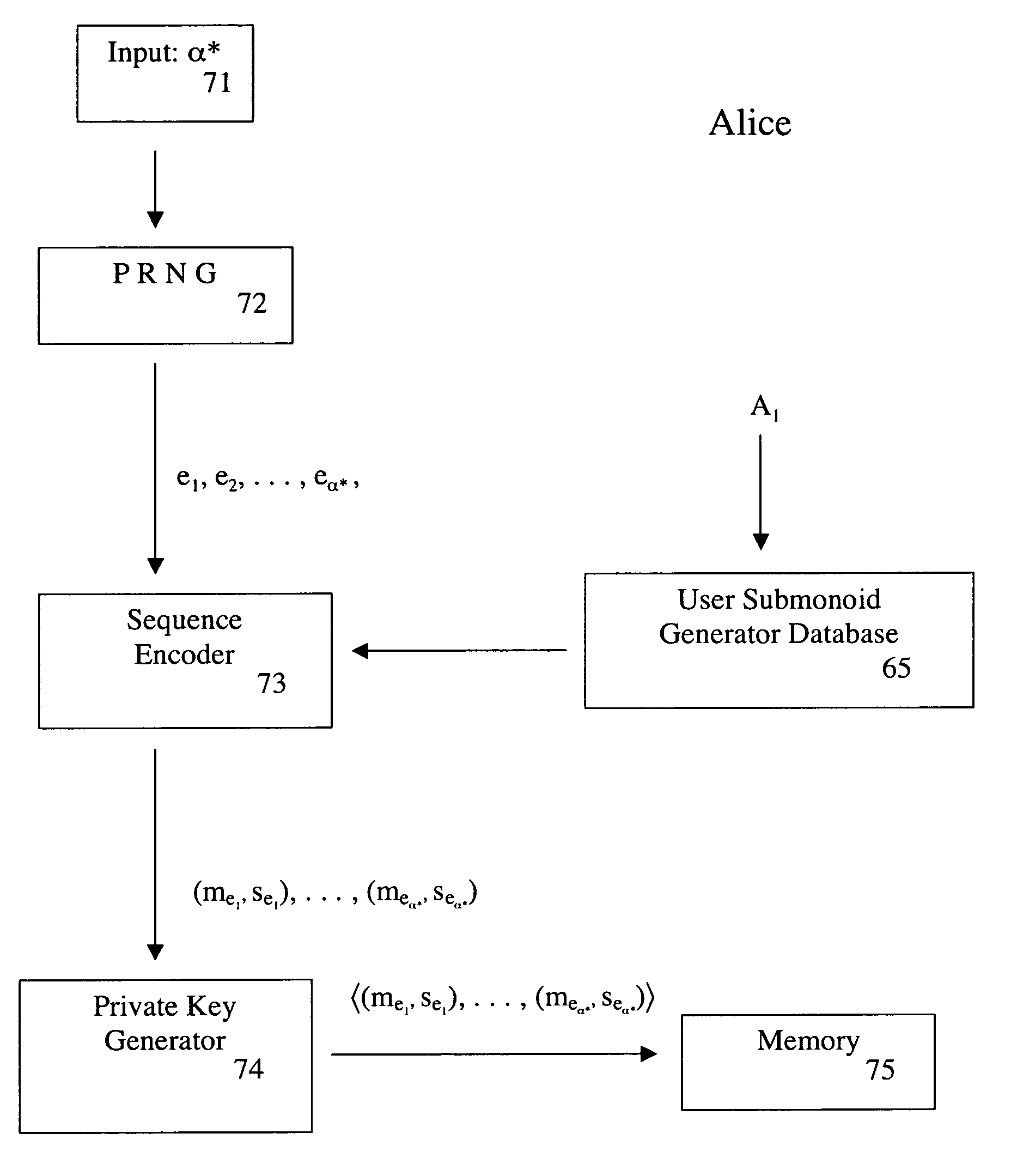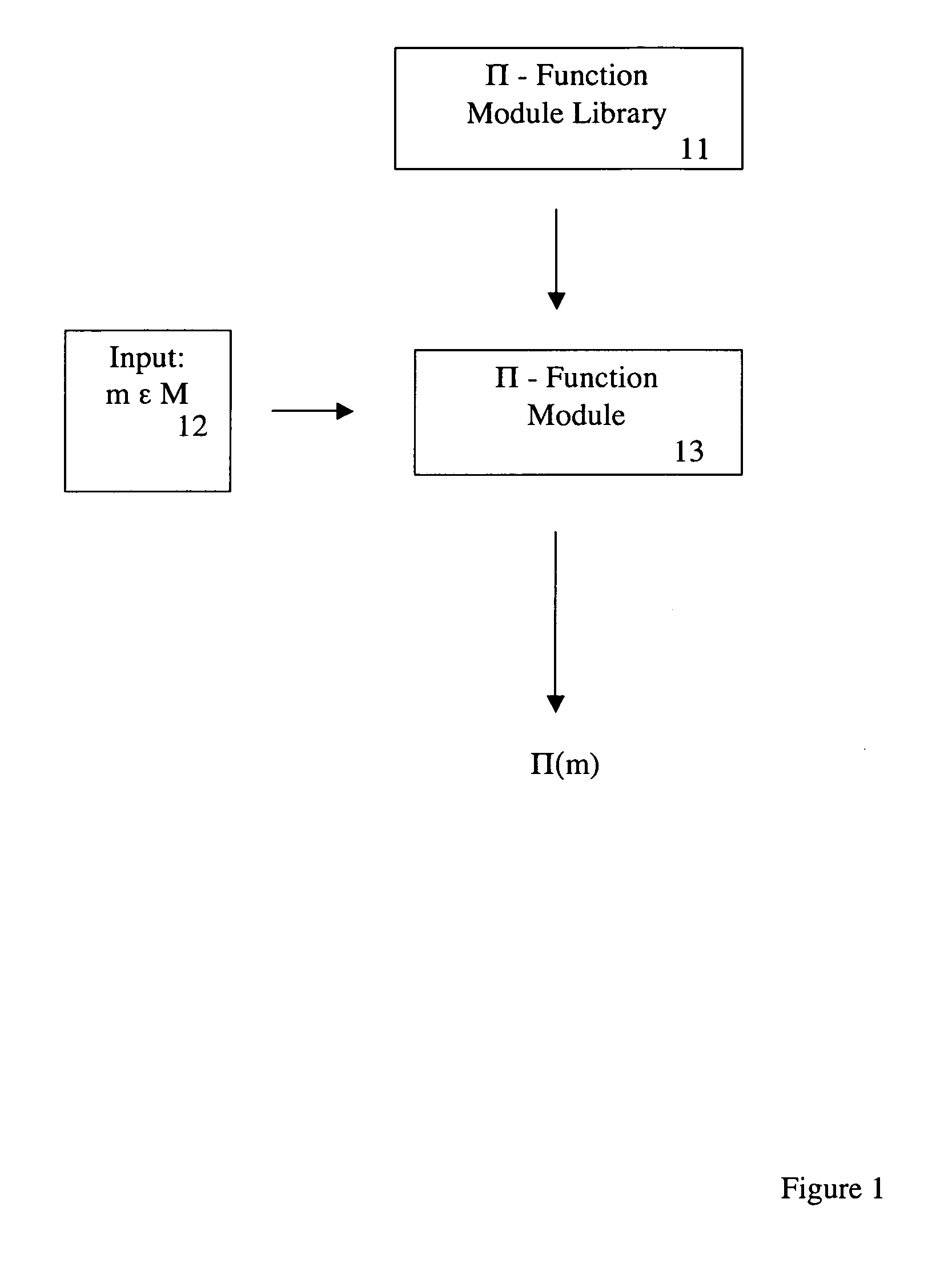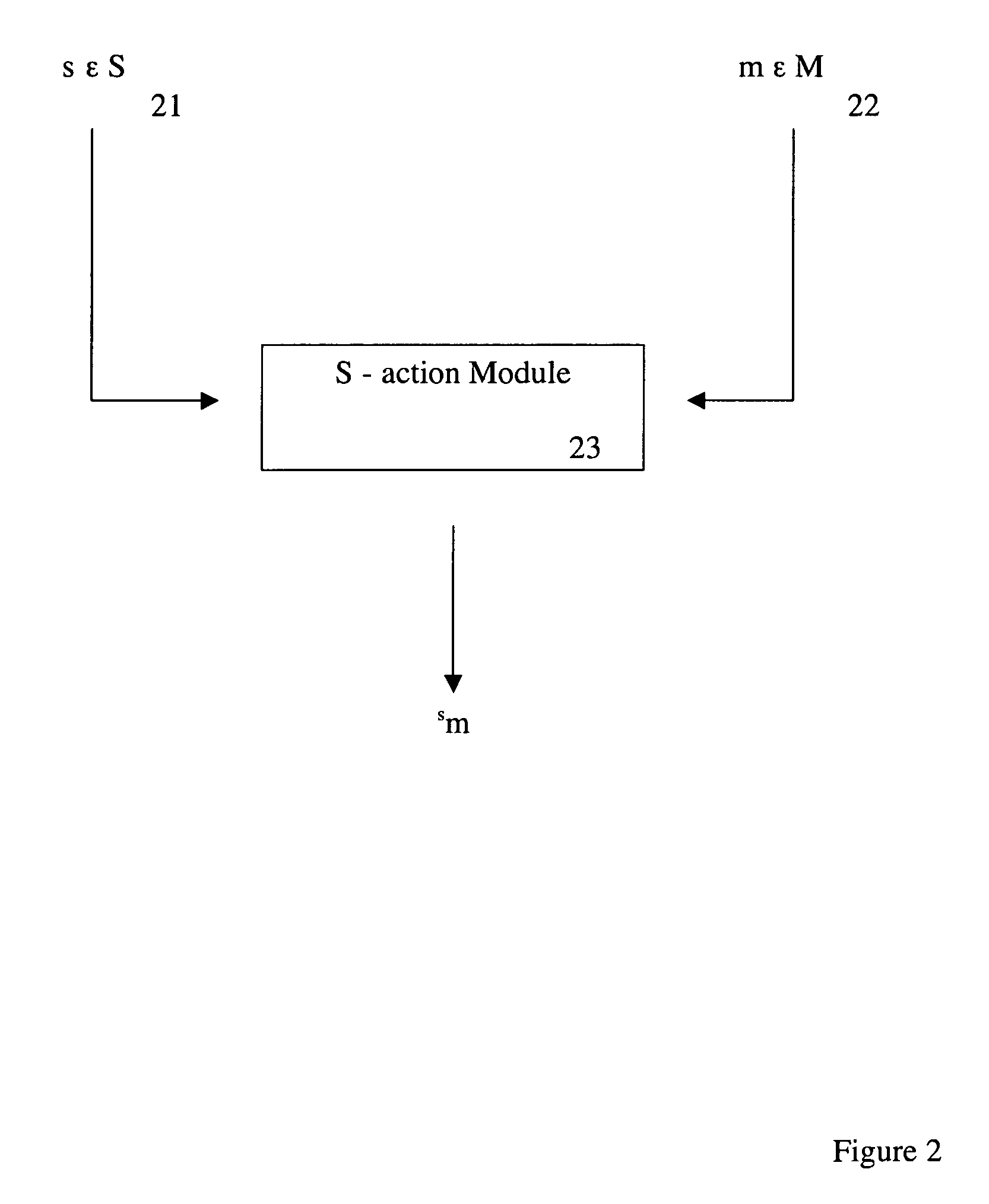Method and apparatus for establishing a key agreement protocol
a key agreement and protocol technology, applied in the field of cryptography, can solve the problems of cumbersome key giving a and b, high cost and time consumption, and inconvenient communication of communication lines,
- Summary
- Abstract
- Description
- Claims
- Application Information
AI Technical Summary
Problems solved by technology
Method used
Image
Examples
example
[0048] An instance of the algebraic eraser and its associated key agreement protocol can be obtained in the case where the monoid. M is chosen to be the set of L×L matrices whose entries are rational functions with integral coefficients in the variables {t1,t2, . . . ,tκ}, i.e., the entries take the form Cij(t1,t2,… ,tκ)Dij(t1,t2,… ,tκ)
where 1≦i, j≦κ, and Cij,Dij are polynomials. The group S is chosen to be the symmetric group on κ symbols, denoted Sκ. The action of the elements of s ε Sκ on the set of variables {t1,t2, . . . ,tκ}, given by
s:ti→ts(i),
can be extended to an action of the monoid M in a natural manner. Given an element of M, input 22, (see FIG. 2) of the form [Cij(t1,t2,… ,tκ)Dij(t1,t2,… ,tκ)]1≤i,j≤κ
and an element s ε Sκ, input 21, the result of the Sκ-Action module 23 is the element of M given by s[Cij(t1,t2,… ,tκ)Dij(t1,t2,… ,tκ)]1≤i,j≤κ=[Cij(ts(1),ts(2),… ,ts(κ))Dij(ts(1),ts(2),… ,ts(κ))]1≤i,j≤κ.
[0049] Having specified the monoid M and ...
PUM
 Login to View More
Login to View More Abstract
Description
Claims
Application Information
 Login to View More
Login to View More - R&D
- Intellectual Property
- Life Sciences
- Materials
- Tech Scout
- Unparalleled Data Quality
- Higher Quality Content
- 60% Fewer Hallucinations
Browse by: Latest US Patents, China's latest patents, Technical Efficacy Thesaurus, Application Domain, Technology Topic, Popular Technical Reports.
© 2025 PatSnap. All rights reserved.Legal|Privacy policy|Modern Slavery Act Transparency Statement|Sitemap|About US| Contact US: help@patsnap.com



